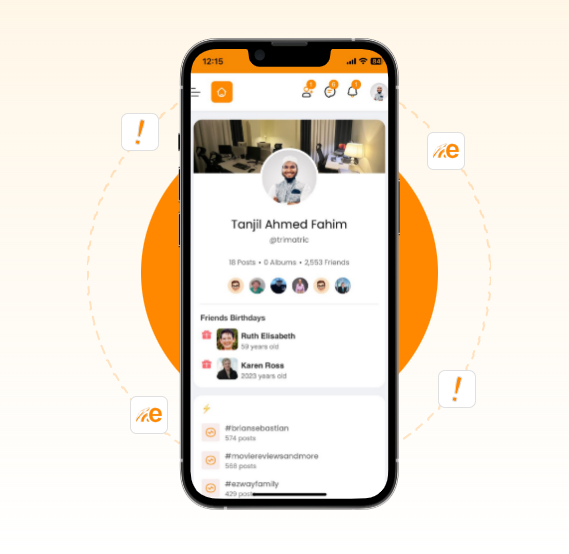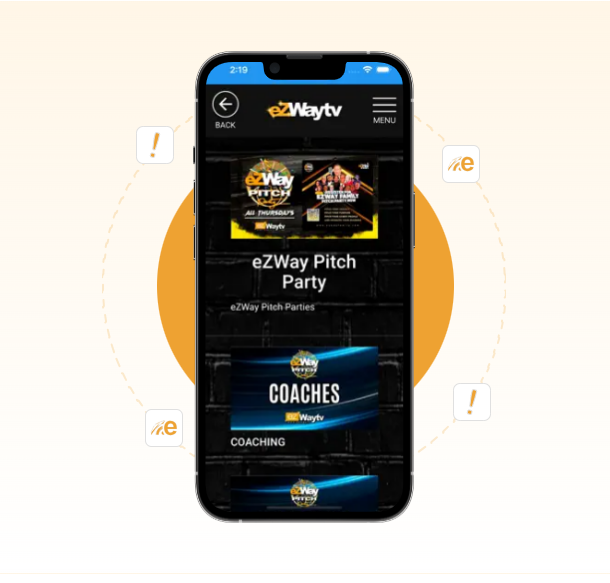Implementing data-driven personalization begins with a robust and precise integration of diverse customer data sources. This process ensures that the personalization engine receives accurate, comprehensive, and timely data, enabling granular segmentation and sophisticated algorithms. In this deep-dive, we explore the technical intricacies, actionable techniques, and common pitfalls associated with data integration for personalization, going beyond surface-level guidance to provide concrete steps for experts seeking mastery.
1. Selecting and Integrating Customer Data Sources for Personalization
a) Identifying High-Quality Data Sources (CRM, transactional, behavioral, third-party)
Start by mapping out all potential data sources within your organization. Prioritize sources that offer high fidelity and relevance:
- CRM Systems: Capture customer profiles, preferences, and interaction history. Ensure data completeness and regular updates.
- Transactional Data: Record purchase history, order values, and frequency. Use this for predictive lifetime value modeling.
- Behavioral Data: Track website clicks, page views, time spent, and engagement with campaigns via tracking pixels and event logs.
- Third-Party Data: Incorporate demographic, psychographic, or intent data from external providers, ensuring compliance with privacy regulations.
b) Techniques for Data Integration: APIs, ETL processes, and Data Warehousing
Implement a layered approach to data ingestion:
- APIs: Use RESTful APIs for real-time data pulls from CRM, transactional systems, and third-party sources. Ensure API rate limits and authentication are managed properly.
- ETL (Extract, Transform, Load): Develop ETL pipelines using tools like Apache NiFi, Talend, or custom Python scripts to periodically extract data, clean and normalize it, then load into a centralized data store.
- Data Warehousing: Consolidate cleaned data into a data warehouse (e.g., Snowflake, Amazon Redshift) to support analytical queries and segmentation.
c) Handling Data Silos: Strategies for Unifying Disparate Data Sets
Disparate data silos hinder holistic personalization. To unify:
- Implement a Master Data Management (MDM) system: Define unique identifiers (e.g., customer ID, email) across systems to link data points accurately.
- Use Data Virtualization: Adopt tools like Denodo or Cisco Data Virtualization to create a unified data layer without physically moving data.
- Leverage Identity Resolution: Apply probabilistic matching algorithms, like Fuzzy Matching or Bayesian models, to reconcile different identifiers and create a single customer view.
d) Ensuring Data Privacy and Compliance During Collection and Integration
Prioritize privacy at every step:
- Implement Privacy by Design: Embed data minimization and purpose limitation from the outset.
- Use Encryption: Encrypt data both at rest and in transit using AES-256 or TLS protocols.
- Maintain Audit Trails: Log data access and modifications to demonstrate compliance with GDPR, CCPA, or other regulations.
- Obtain Explicit Consent: Leverage consent management platforms to track user permissions for data collection and personalization.
2. Advanced Segmentation Strategies for Personalized Customer Journeys
a) Creating Dynamic Segmentation Models Using Machine Learning
Move beyond static segments by deploying machine learning models that adapt to evolving customer behaviors. For example:
- Cluster Analysis: Use algorithms like K-Means, DBSCAN, or Hierarchical Clustering on multidimensional data (demographics + behavior) to identify natural customer groups.
- Predictive Segmentation: Train classifiers (e.g., Random Forest, Gradient Boosting) to predict segment membership based on recent activity, purchase propensity, or engagement scores.
b) Combining Behavioral and Demographic Data for Micro-Segments
Create highly specific segments by integrating static demographic data with dynamic behavioral signals:
- Feature Engineering: Generate composite features such as “Recent high-value purchase + Age group 30-40 + Frequent website visits.”
- Weighted Scoring: Assign weights to different data points based on predictive power and combine into a segment score.
c) Using Real-Time Data to Update Segments Continuously
Implement streaming data pipelines (e.g., Kafka + Spark Streaming) to:
- Capture real-time events: Cart additions, page views, conversions.
- Update segment membership dynamically: Use sliding windows (e.g., last 30 minutes) to reassign customers in segments based on recent activity.
- Automate segment refreshes: Schedule batch processes during off-hours for large-scale updates, ensuring minimal latency.
d) Case Study: Segmenting Customers for Personalized Email Campaigns
A fashion retailer used clustering on behavioral data (purchase frequency, browsing patterns) combined with demographic profiles to create 15 micro-segments. By deploying a machine learning model in their ESP (Email Service Provider), they automatically assigned new customers to relevant segments, resulting in a 20% increase in email engagement and a 15% uplift in conversions within 6 months.
3. Building Personalization Algorithms and Rules
a) Designing Rule-Based Personalization Flows (e.g., conditional content)
Start with a rules engine like Adobe Target, Optimizely, or a custom solution. Steps include:
- Identify trigger conditions: e.g., if customer purchased ‘X’ in last 30 days, show product recommendations related to that category.
- Define content variants: create different content blocks tailored for each rule set.
- Implement fallback logic: ensure default content if conditions are unmet.
b) Implementing Collaborative and Content-Based Filtering Techniques
Leverage recommendation algorithms:
- Content-Based Filtering: Use item attributes and customer preferences to recommend similar products. For example, if a customer buys organic skincare, recommend other organic products.
- Collaborative Filtering: Use user-item interaction matrices and matrix factorization (e.g., SVD) to find similar users and recommend items they liked.
c) Leveraging Predictive Analytics to Anticipate Customer Needs
Build models such as:
- Churn Prediction: Use logistic regression on engagement metrics to identify at-risk customers and proactively personalize retention offers.
- Next Best Action: Implement Markov Decision Processes or reinforcement learning to suggest the most relevant next touchpoint or product.
d) Validating and Testing Algorithms for Accuracy and Relevance
Ensure algorithms perform as expected:
- A/B Testing: Compare algorithm-driven personalization against control segments.
- Metrics Monitoring: Track click-through rates, conversion rates, and dwell time.
- Feedback Loops: Incorporate user feedback and adjust models accordingly.
4. Personalization Tactics at Different Customer Journey Stages
a) Awareness Stage: Personalized Content Recommendations
Use browsing history and demographic data to curate homepage banners, hero images, and content blocks. For instance, show eco-friendly products to environmentally conscious visitors based on their browsing patterns.
b) Consideration Stage: Customized Product Recommendations and Messaging
Deploy real-time behavioral signals to present dynamic recommendations, such as “Customers who viewed this product also viewed…” or personalized emails highlighting relevant features.
c) Purchase Stage: Dynamic Offers and Abandoned Cart Recovery
Implement algorithms that adjust discounts based on customer value and cart abandonment timing. Use personalized messaging for recovery, e.g., “Hi, {Name}, your {Product} is waiting,” with tailored discount codes.
d) Post-Purchase: Personalized Follow-up and Loyalty Programs
Send personalized thank-you notes, product recommendations based on previous purchases, and customized loyalty rewards tiers. Use predictive models to identify next best offers.
5. Technical Implementation: Deploying Personalization in Digital Channels
a) Setting Up Real-Time Data Processing Pipelines (using Kafka, Spark, etc.)
Establish a streaming architecture:
- Data Ingestion: Use Kafka producers to stream user events from websites/apps.
- Stream Processing: Utilize Spark Streaming or Flink to filter, aggregate, and analyze events in real time.
- Output: Push processed data to a serving layer or personalization engine via REST APIs or message queues.
b) Configuring Content Management Systems for Dynamic Content Delivery
Implement dynamic content modules within your CMS (e.g., Drupal, WordPress, or custom). Use placeholders that are populated at runtime based on user profile data fetched via APIs.
c) Integrating Personalization Engines with Websites and Apps via APIs
Design RESTful APIs that accept user identifiers and context, returning personalized content snippets or recommendations. Ensure low latency (<200ms) for user experience consistency.
d) Automating Personalization Updates and Content Testing (A/B/n testing)
Set up automation tools like Optimizely or Google Optimize to test different personalization variants. Use scripts to periodically refresh rules or content variants based on performance data.
6. Monitoring, Optimization, and Continuous Improvement
a) Tracking Key Metrics: Engagement, Conversion, Customer Satisfaction
Use analytics platforms (Google Analytics, Mixpanel) to monitor:
- Engagement: Time on page, click-through rates.
- Conversion: Purchase rates, form completions.
- Customer Satisfaction: NPS, customer feedback surveys.
b) Performing A/B Testing for Personalization Variations
Create controlled experiments by splitting traffic and measuring impact on KPIs. Use statistical significance testing (e.g., chi-square, t-test) to validate improvements.
c) Using Customer Feedback to Refine Personalization Rules
Incorporate direct feedback through surveys or feedback widgets. Use sentiment analysis on open responses to identify pain points or personalization failures.






















